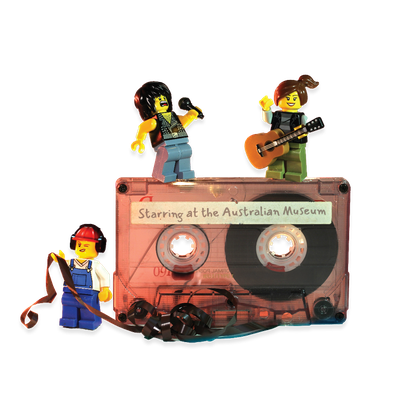Your search returned 56 results
By Page Type
By Tag
- All
- fish (966)
- blog (696)
- fishes of sydney harbour (401)
- First Nations (299)
- Blog (236)
- AMRI (169)
- archives (164)
- Eureka Prizes (146)
- Aboriginal and Torres Strait Islander (135)
- insect (126)
- Ichthyology (124)
- geoscience (109)
- minerals (102)
- climate change (99)
- podcast (94)
- Fish (91)
- Anthropology (89)
- International collections (80)
- Minerals Gallery (78)
- wildlife of sydney (78)
- Labridae (77)
- frog (74)
- gemstone (70)
- photography (66)
- history (64)
- Mollusca (60)
- gem (59)
- staff (59)
- Birds (56)
- Gems (56)
- Indonesia (56)
- education (56)
- shark (55)
- AMplify (54)
- people (53)
- earth sciences (50)
- exhibition (50)
- past exhibitions (50)
- Gobiidae (48)
- sustainability (46)
- Pomacentridae (45)
- Serranidae (44)
- lifelong learning (42)
- science (42)
- Earth and Environmental Science (41)
- Syngnathidae (41)
- Ancient Egypt (40)
- Bali (40)
- bird (40)
- dangerous australians (40)
-
Robins showing their true colours
https://australian.museum/learn/news/blog/robins-showing-their-true-colours/Some Eastern Yellow Robins are brighter than others, but are they just drifting?
-
The quest for the Dwarf-Kingfisher
https://australian.museum/learn/news/blog/the-quest-for-the-dwarf-kingfisher/If a kingfisher is caught in a net, does it reside in the forest?
-
Generalists are the most urban-tolerant birds
https://australian.museum/learn/news/blog/generalists-most-urban-tolerant/We used a novel method, integrating large datasets, to identify the ‘urbanness’ of Australian birds
-
Feathers of the Gods: Is it a Bird?
https://australian.museum/learn/news/blog/feathers-gods-bird/Is it a bat? Is it a plane? If you are an air traveller, you probably have more to do with museums, especially ours, than you think!
-
First Nations storytelling
https://australian.museum/publications/birds-storybox/first-nations-storytelling/Australia’s birds play many symbolic roles in First Nations cultures. As carriers of story, they teach us how to live in connection with other living beings.
-
The Birds of Australia STORYBOX
https://australian.museum/publications/birds-storybox/about/Inspired by the work of John and Elizabeth Gould, The Birds of Australia, showcases a unique digital experience presented on a 3D storytelling cube.
-
Red-tailed Black-Cockatoo
https://australian.museum/learn/animals/birds/red-tailed-black-cockatoo-calyptorhynchus-banksii/This is the first cockatoo to be illustrated by Sydney Parkinson, Joseph Banks' draughtsman on the Endeavour, while the Endeavour was being repaired in the Endeavour River.
-
Powerful Owl
https://australian.museum/learn/animals/birds/powerful-owl/The Powerful Owl is Australia's largest owl.
-
Laughing Kookaburra
https://australian.museum/learn/animals/birds/laughing-kookaburra/The Laughing Kookaburra is not really laughing when it makes its familiar call. The cackle of the Laughing Kookaburra is actually a territorial call to warn other birds to stay away.
-
Emu
https://australian.museum/learn/animals/birds/emu/The name 'emu' is not an Aboriginal word. It may have been derived from an Arabic word for large bird and later adopted by early Portuguese explorers and applied to cassowaries in eastern Indonesia. The term was then transferred to the Emu by early European explorers to Australia.
-
Discover more
2025 Australian Geographic Nature Photographer of the Year
Special exhibition
Free entry
Now open -
Discover more
Unfinished Business
Special exhibition
Free entry
Now open -
Discover more
Wansolmoana
Permanent exhibition
Free entry
Open daily -
Find out more
Burra
Permanent kids learning space
Free entry
10am - 4.30pm![]()
-
Discover more
Minerals
Permanent exhibition
Free entry
Open daily![]()




